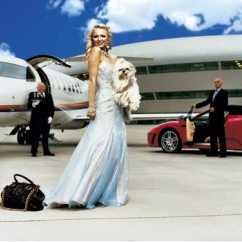Articles and News
20 Global Luxury Market Trends For 2020 | January 08, 2020 (0 comments)

Merrick, NY—Despite geopolitical posturing and fears of recession, 2019 turned out fairly decent for the global luxury market, closing out the second decade of the new millennium with an estimated $1.4 trillion in sales of luxury goods worldwide for the year.
Related: The Top Trends That Will Change How You Do Business In The New Decade
As we move into 2020—the third decade into the 2000s—prognosticators worldwide have dusted off their respective crystal balls to try and see what’s on the horizon for luxury consumers and marketers. Number one is that modern affluent consumers—especially younger ones—seek to express who they are rather than what they have.
Related: 2019 Holiday Is Luxury Jewelers’ Strongest Ever, But Not Because Of Millennials
Geopolitical saber-rattling aside, a slowing luxury market in Asia will force brands counting on Asian expansion to do a re-think. In fact, a fundamental re-think of luxury is in order worldwide, say leading luxury experts.
With that in mind, here are some key macro trends* that will impact all luxury brands and retailers in one form or another, and jewelers are no exception.
1. Relevancy is key. Heritage and legacy will no longer be enough for established luxury brands to sustain their value equation. Their stories must go beyond brand history and relate to consumers’ needs and passions today. Relevancy also impacts design.
2. Luxury consolidation will continue. LVMH’s acquisition of Tiffany is a prime example, and expect more of same.
3. Increasing number of private-label, in-house, and direct-to-consumer (DTC) luxury brands.
4. Increasing inclusivity. A superficial nod to inclusivity won’t cut it; brands and retailers will need to demonstrate sincere commitment to inclusivity in both marketing and their total business model.
5. New, now, and personal. Affluent consumers increasingly expect personalized, adaptive services and experiences and seamless convenience.
6. The data conundrum: consumers want a personalized experience but also value their privacy. Luxury businesses will need to balance data use with rising customer privacy concerns, new regulations, and consumer demand for transparency in how that data is used.
7. Sustainability underpins all. Remembering that modern affluent consumers (especially younger ones) seek to express who they are rather than what they have with more responsible consumption of everything, including luxury. To wit:
8. Blockchain will offer traceability for both authenticity and responsibility.
9. On Target: the retailer sparked two decades of collaborations between luxury brands and unexpected partners; it will continue to be a cool thing to do that hasn’t hit the saturation point yet. To wit again,
10. The newest frontier of partnerships is between luxury brands and online video gaming. Check out Louis Vuitton’s skins in League of Legendsand its corresponding IRL capsule collection. Correspondingly, brand avatars are on the rise.
11. New social media and brand communities and consumers seeking an authentic, unfiltered look behind the scenes at luxury brands.
12. Rising “phygital” experiences like short-term pop-up spaces for luxury brands to offer—you guessed it—personalized physical experiences.
13. Boxed in: With more online shopping, packaging becomes a critical part of the experience. Sustainability, however, will demands boxes that are worthy keepsakes, not wasteful throwaways.
14. Overexposure: in the rush to gain new, entry-level customers, some luxury brands became too democratic and diluted the exclusivity that gave the brand cachet. Now they’re struggling to retreat and retrench and regain their once-lofty luxury cred with fewer but higher-value items.
15. Dressing down: casual workplaces are now the norm, not the exception. Jeans and backpacks take the place of bespoke suits and briefcases. This impacts the kinds of jewelry and watches consumers want. Precious materials are fine but overly formal design is irrelevant to most people’s lifestyles.
16. Local and niche brand startups: Products that better represent the customer’s own culture and heritage, not necessarily only that of the brand. Likewise, startup brands will target micro niches of luxury, often with a product of comparable quality to classic brands but at a much lower price and with a better customer experience. The niche brand can be quite profitable and sustainable on a smaller scale.
17. Climate concerns will shape luxury purchasing. As mainstream media discussions about climate change have shifted to a “climate crisis,” this will impact luxury consumption, particularly in younger consumers age 18-34, 70% of whom are worried about it. 62% of Gen-Xers 35-54 are worried and even a slight majority (56%) of Boomers 55 and over say they’re worried about climate change. Consumers are shifting from eco-purchasing as status to putting shame on companies and fellow consumers for not offering sustainable options or purchasing sustainably. Between Extinction Rebellion, the global Strike for Climate movement, and Greta Thunberg, consumers have gone past the tipping point on this issue.

Teenage climate activist Greta Thunberg. Image: NBC News
18. Millennials will account for half the luxury market by 2025. (Currently they represent about 32%.) But as we know, their status values are different than their predecessors: they value social connections, insider knowledge, free time, travel, community, self-growth, and security. 19. Luxury shoppers want to be seen as ethical, creative, connected, philanthropic, and conscientious, and will disassociate from brands that do not share their values. 57% of luxury consumers are now more likely to buy from or boycott a brand because of its social or political stance.
Related: 2019 Holiday Is Luxury Jewelers’ Strongest Ever, But Not Because Of Millennials
20. Wellness. Between CBD everything, fitness trackers, and plant-based burgers, consumers clearly feel burned out by the world. As a corollary, they also will start seeking an antidote to toxic social media, turning to smaller and more intimate sites that are meaningful, respectful, and allow them to connect with like-minded peers.
While some of these themes are a bit ivory-tower, the most key of key trends—those that come up over and over in every single report—are the ones to pay the most attention to. Those are:
- Sustainability (includes climate change, ethical sourcing, and social responsibility)
- Diversity and inclusivity (in both marketing and business model)
- Customers expressing who they are, not what they own (including brands’ social values, authenticity, and the experience they provide; the rental/sharing economy taps into this too)
Sources: Luxe Digital, Seymour Sloan, Matterofform.com, Trendwatching.com, Fashionista.com.







